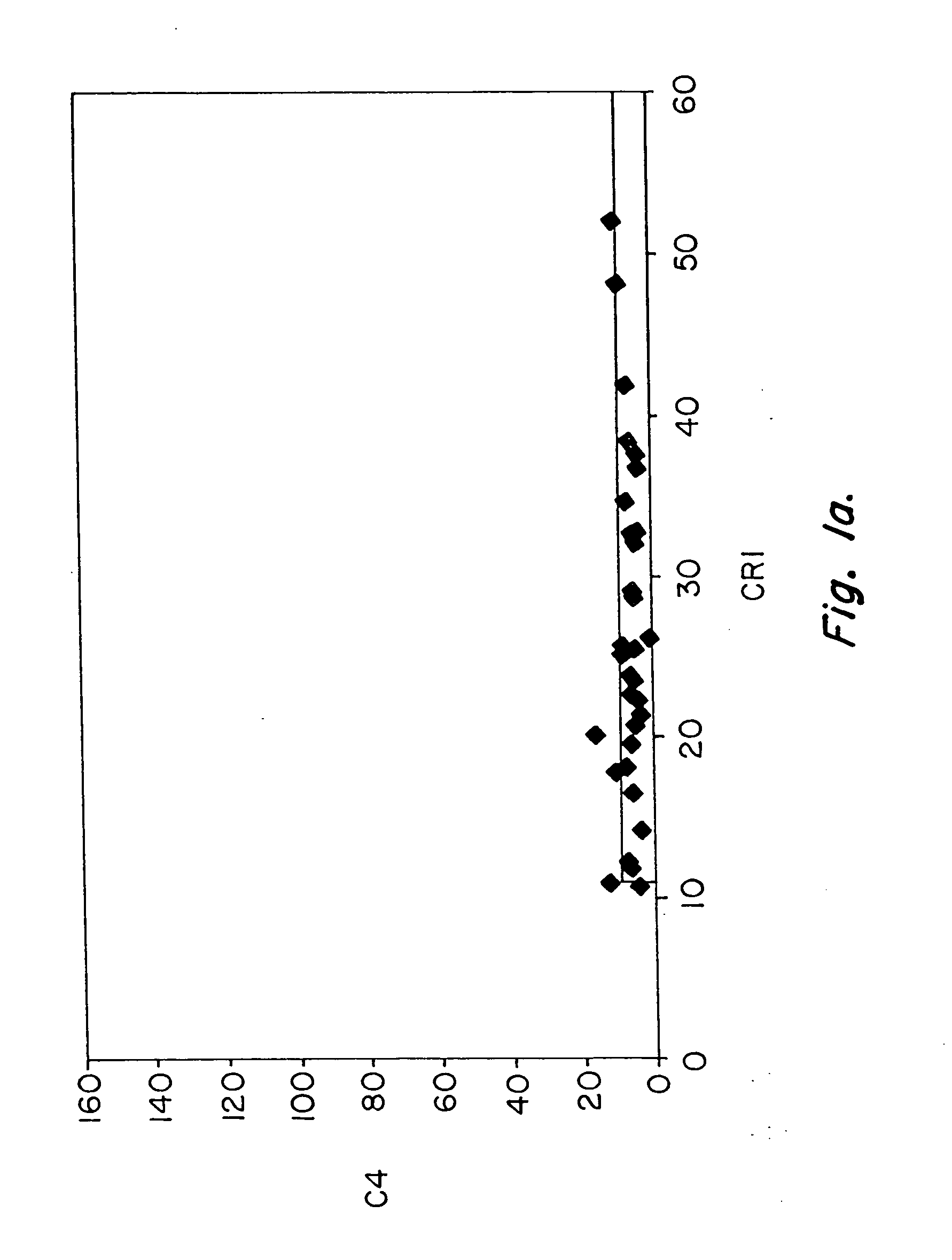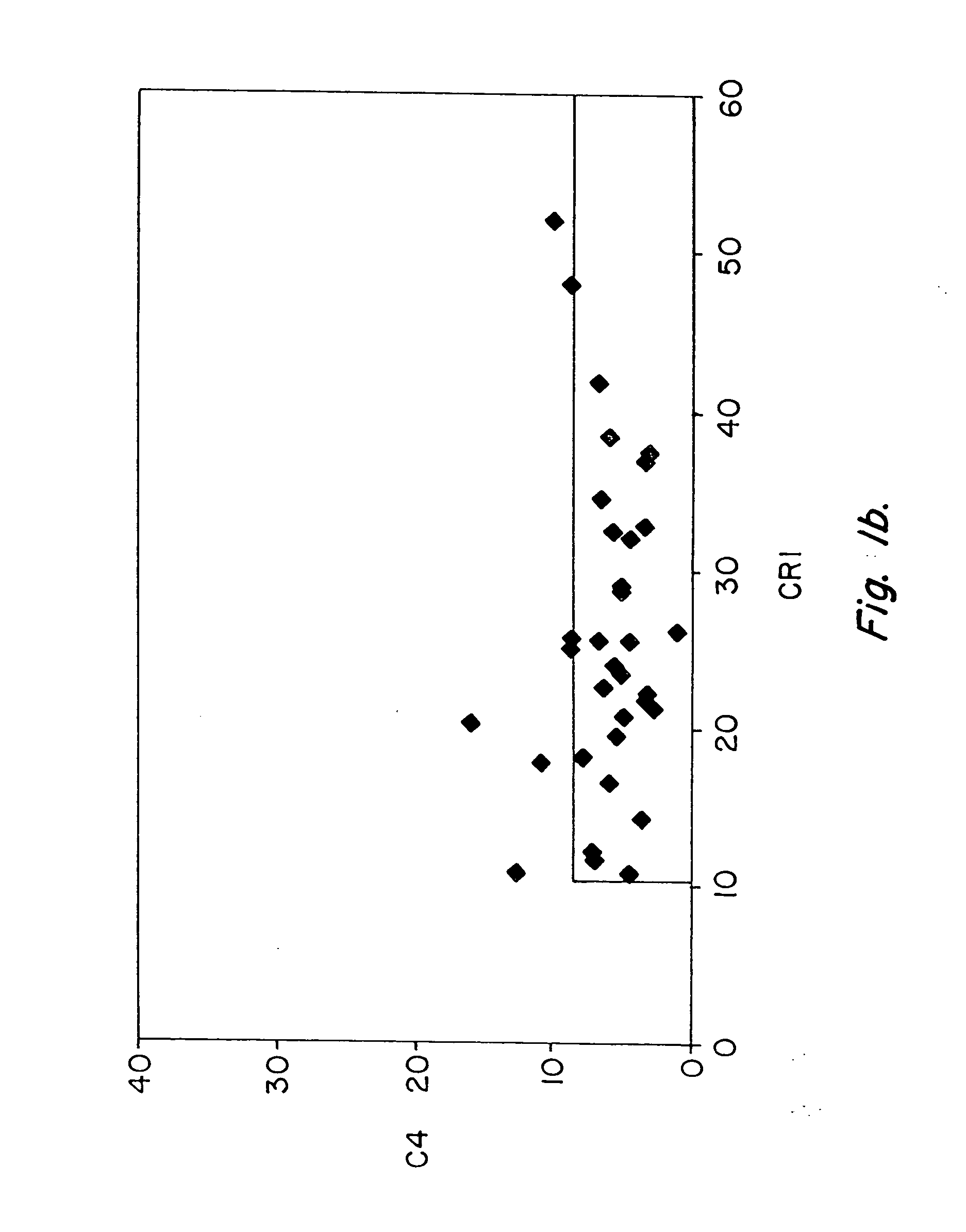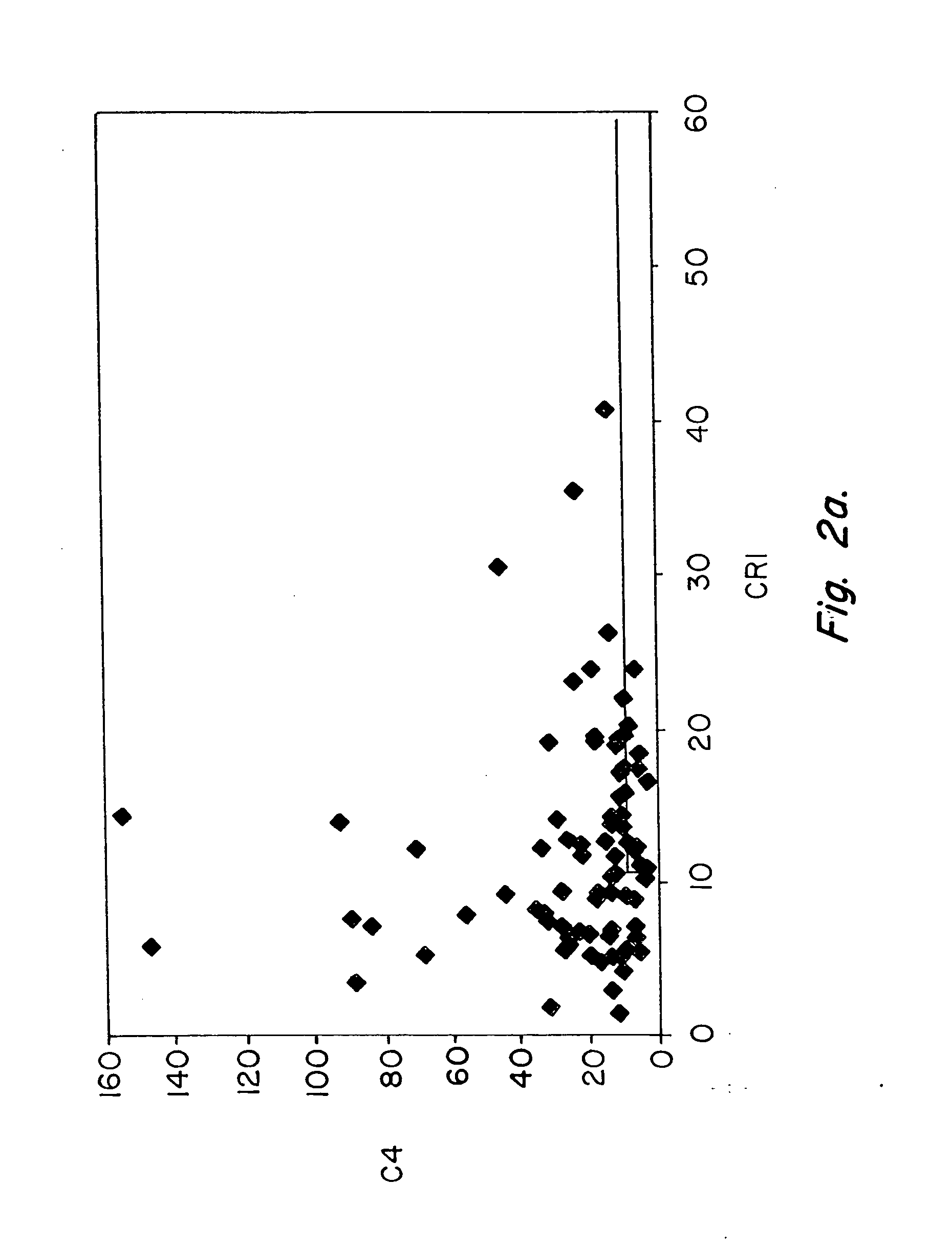Diagnosis and monitoring of systemic lupus erythematosus and of scleroderma
a technology of systemic lupus erythematosus and monitoring, applied in the direction of laboratory glassware, instruments, analysis using chemical indicators, etc., can solve the problems of chronic inflammation and tissue damage, diagnosis is problematic, and diagnosis is problemati
- Summary
- Abstract
- Description
- Claims
- Application Information
AI Technical Summary
Problems solved by technology
Method used
Image
Examples
example 1
Assays of C4d and CR1 in Healthy Controls: Minimal Fluctuation Over Time
[0078] Initially, six healthy individuals were studied. Each of these normal controls was studied on at least two separate days, and one individual was studied on six different days over a span of three months. As shown in Table I, C4d was detected at low levels on erythrocytes of each of the six healthy individuals, and the level of C4d detected was remarkably constant over days, weeks, and even months within a given individual. These data demonstrated that C4d could be easily and reliably detected on erythrocytes of any individual, and the consistent levels observed in healthy individuals indicated that even slight fluctuations reflect disease activity. As expected, CR1 was present at much higher levels than C4d on erythrocytes of all normal individuals, yet CR1 levels also demonstrated minimal fluctuation over days, weeks, and even months.
[0079] Samples of 1 mL of EDTA-anticoagulated peripheral blood were t...
example 2
Assays of CR1 and C4d to Distinguish Patients with SLE from Healthy Controls
[0081] This example describes conducting assays on patients to diagnose systemic lupus erythematosus, and to establish reference values or ranges of values for complement component C4d and complement receptor CR1.
[0082] Pilot studies of serial determinations in normal individuals were followed by studies of patients with SLE. For this purpose, we recruited 86 patients with lupus from our outpatient office. A single determination of erythrocyte CR1 and C4d was made, using the same assay, in 86 individuals who met ACR criteria for the diagnosis of SLE (Table III) and in healthy controls (Table II). The mean and median values of CR1 and C4d for patients with SLE and healthy controls are shown in Table VII. Whereas the mean value for C4d in healthy individuals was 5.7, the mean value for C4d among patients with SLE was 23.9 (p=0.0001). The mean MFC for CR1 among the 35 healthy individuals was 25.4, whereas the...
example 3
Assays of CR1 and C4d for Distinguishing Patients with SLE from Patients with Other Diseases
[0085] These studies of patients with SLE vs. healthy controls were followed by studies to compare patients with SLE with patients diagnosed with diseases other than SLE (n=111). For these comparison, we studied patients with rheumatoid arthritis (n=15), osteoarthritis (n=2), hepatitis C virus infection (n=17), polymyositis / dermatomyositis (n=33), Wegener's granulomatosis (n=1), Sjogren's syndrome (n=3), sarcoidosis (n=1), urticarial vasculitis (n=1), sickle cell anemia (n=8), overlap syndrome / undifferentiated connective tissue disease (n=15), leukemia / lymphoma (n=9), primary Raynaud's syndrome (n=3), hemophilia (n=2), and psoriatic arthritis (n=1). A single determination of erythrocyte CR1 and C4d was made, using the same assay. The mean and median values of CR1 and C4d for patients with SLE, as compared with patients with other diseases are shown in Table VII. Whereas the mean value for C4...
PUM
| Property | Measurement | Unit |
|---|---|---|
| concentration | aaaaa | aaaaa |
| fluorescent | aaaaa | aaaaa |
| mean fluorescence | aaaaa | aaaaa |
Abstract
Description
Claims
Application Information
 Login to View More
Login to View More - R&D
- Intellectual Property
- Life Sciences
- Materials
- Tech Scout
- Unparalleled Data Quality
- Higher Quality Content
- 60% Fewer Hallucinations
Browse by: Latest US Patents, China's latest patents, Technical Efficacy Thesaurus, Application Domain, Technology Topic, Popular Technical Reports.
© 2025 PatSnap. All rights reserved.Legal|Privacy policy|Modern Slavery Act Transparency Statement|Sitemap|About US| Contact US: help@patsnap.com



